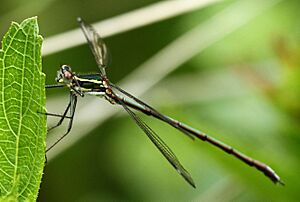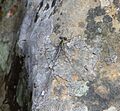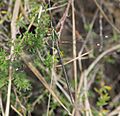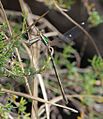Drakensberg malachite facts for kids
Quick facts for kids Drakensberg malachite |
|
|---|---|
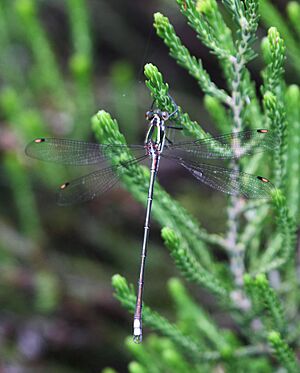 |
|
| Male | |
| Conservation status | |
| Scientific classification | |
| Genus: |
Chlorolestes
|
| Species: |
draconicus
|
| Synonyms | |
|
Chlorolestes draconica Balinsky, 1956 [orth. error] |
|
The Drakensberg malachite (Chlorolestes draconicus) is a type of damselfly. Damselflies are delicate insects, a bit like dragonflies. They usually hold their wings together over their body when resting. This special damselfly belongs to a family called Synlestidae. It was first described by Boris Balinsky in 1956.
Where Does It Live?
This damselfly lives in a small area. You can find it only in the Drakensberg mountains. These mountains are located in Lesotho and South Africa.
Its home is mostly safe. Many of the places where it lives are inside the uKhahlamba / Drakensberg Park. This park helps protect the damselflies and their habitat. Because of this protection, experts say its conservation status is "Least Concern." This means it is not currently at high risk of disappearing.
What Is Its Home Like?
The Drakensberg malachite likes to live near rocky streams. These streams are found at very high altitudes. You can find them between 1,700 and 3,000 meters (about 5,500 to 9,800 feet) above sea level. This high, cool environment is perfect for them.
How to Identify This Damselfly
The Drakensberg malachite looks a lot like another damselfly, the Chlorolestes fasciatus. Often, you might see more of the Chlorolestes fasciatus than the Drakensberg malachite.
However, there are ways to tell them apart:
- The Drakensberg malachite is usually bigger than Chlorolestes fasciatus.
- It also tends to be darker in color.
- Look closely at the patterns on their bodies. The shape of the stripe on their upper chest (called the antehumeral stripe) is different.
- Also, the small parts at the end of their body (called appendages) have different shapes. These small differences help scientists tell the two species apart.



